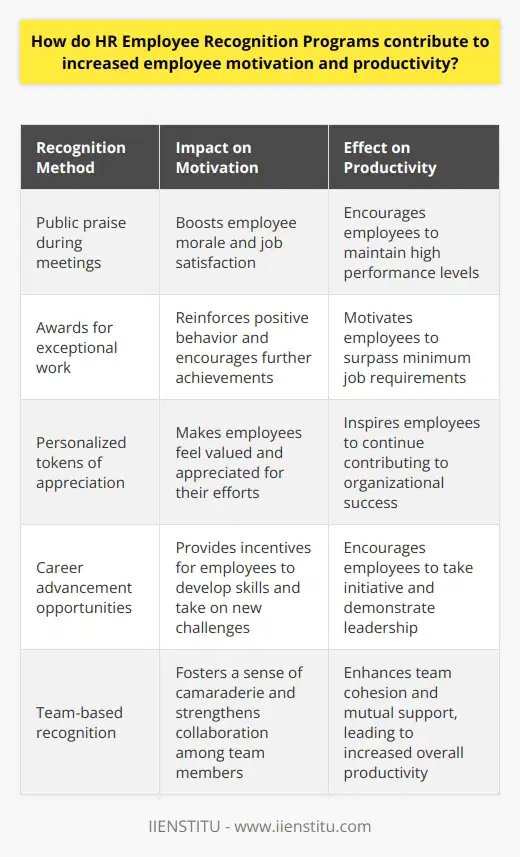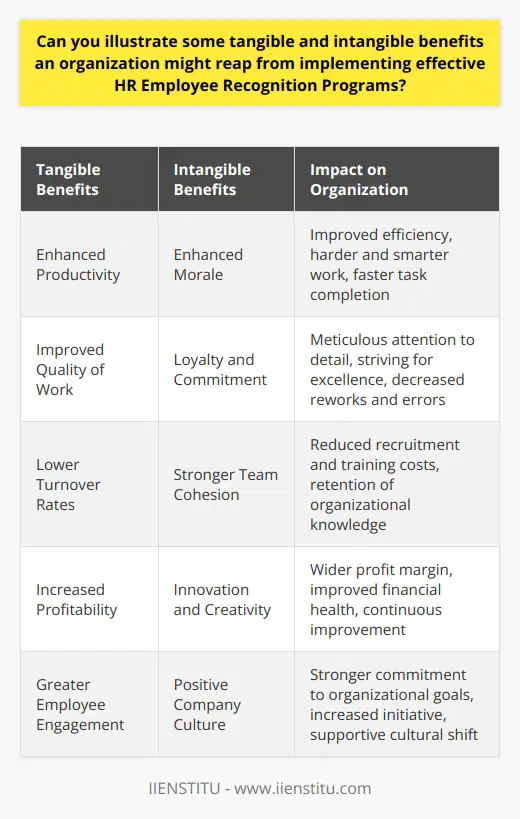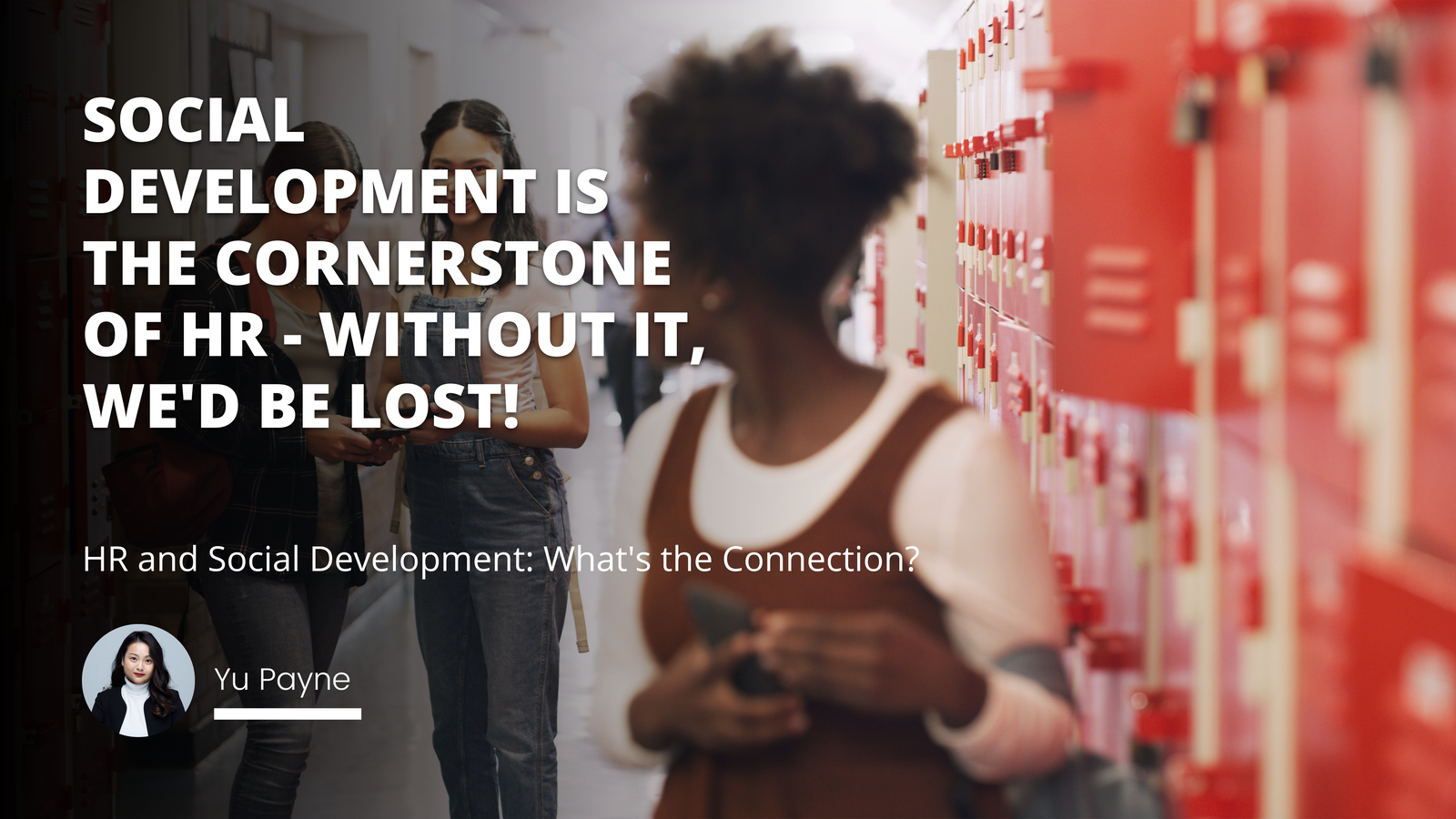
Employee recognition is not simply a nice-to-have element of organizational culture; it is a critical component in fostering a motivated, engaged, and high-performing workforce. With a pervasive and undeniable role in building positive employee relationships and boosting morale, recognition programs have come to the forefront as a key strategy in human resource management. In this article, we delve into the nuances of HR Employee Recognition Programs, exploring their pivotal roles and manifold benefits within various business settings.
Our aim is to unveil the layers of designing an effective recognition program, understand the role of HR in its implementation, and examine the challenges organizations may encounter.
Understanding Employee Recognition Program
Definition of Employee Recognition Program
An Employee Recognition Program is a systematic, formal initiative by an organization to regularly acknowledge and reward employees for outstanding performance, significant contributions, or notable achievements. These programs can vary from organization to organization but are generally imbued with significant strategic thought to align an organization's values and goals with the rewarding process.
Importance of Employee Recognition in a Company
The importance of an Employee Recognition Program lies in its capacity to acknowledge the hard work and achievements of the employees. Recognition is a powerful motivator as it communicates to employees that their efforts are not only noticed but truly valued. This validation can lead to increased employee satisfaction, reduced turnover rates, and heightened productivity. Importantly, recognition also supports the cultivation of a positive work environment where employees are more likely to feel connected to their colleagues and committed to their workplace.
Types of Employee Recognition
Typically, an Employee Recognition Program can manifest in several types, such as performance-based recognition, recognizing years of service, peer-to-peer recognition, and more spontaneous or informal acknowledgements. Each type serves to meet diverse objectives, from driving performance to building team cohesion. Understanding the various forms of recognition is an elemental step in crafting a program that resonates across the spectrum of a workforce.
Designing an Effective HR Employee Recognition Program
Recognize Everyone's Efforts
Recognition is most impactful when inclusive, ensuring that every employee's contributions are noted. This includes not only full-time, in-office staff but also part-time, remote, or contract workers. The merits of an inclusive recognition system are many, as they encourage a sense of belonging and collective achievement that can propel the entire organization forward.
Regular and Consistent Recognition
Regular and consistent recognition reinforces the behaviors and values an organization wishes to promote. It is crucial for recognition to be timely, as delayed recognition might lose its significance and the opportunity to positively influence employee behavior and morale. A well-timed acknowledgment can galvanize further contributions and continue to foster a culture of excellence.
Personalization and Authentic Recognition
Personalizing recognition is paramount; it shows a deep appreciation for the individual's specific contributions. Generic acknowledgements can often seem hollow, undermining the program's purpose. However, when recognition is authentic and directly correlated with the recipient's actions, it can significantly enhance the employee's sense of value and belonging within the company. Public recognition adds another layer, as it not only congratulates the achiever but also sets a benchmark for success within the team or organization.
Examples of Successful Recognition Programs
Several leading companies have set impressive precedents with their recognition programs. For instance, Google's peer recognition program encourages employees to appreciate each other's contributions, fostering a robust and collaborative work culture. Similarly, Southwest Airlines' "Kick Tail" program allows employees to award points to their peers for specific actions that embody the company's values. These points can then be redeemed for various rewards, integrating recognition with tangible appreciation.
HR's Role in Employee Recognition Program
Helping Establish the Program
HR plays a seminal role in establishing the foundation of an Employee Recognition Program. This involves devising the strategy, the criteria for recognition, and determining the rewards. HR professionals, drawing on their understanding of the workforce, can craft a program that resonates with the organizational culture and values, ensuring the initiative's success.
Ensuring Fair Recognition
Fairness in recognition is crucial for maintaining credibility and effectiveness. HR is tasked with ensuring that the recognition is based on objective achievements or contributions, thus sustaining employee trust in the system. They are responsible for developing transparent criteria that eliminate biases and favoritism, which can otherwise diminish the program's perceived value.
Continuous Improvement and Adapting Changes
As businesses evolve, so must their recognition programs. HR is instrumental in collecting feedback, analyzing recognition data, and adapting programs to meet the changing needs of the workforce. This is vital for maintaining a relevant and impactful recognition strategy that continues to inspire and engage employees.
Challenges in Implementing HR Employee Recognition Program
Need for Authentic Recognitions
One of the prime challenges in implementing a recognition program is ensuring that each acknowledgement is sincere and meaningful. Over-automation or routine acknowledgements can dilute the essence of genuine appreciation, leading to a decrease in the perceived value of the recognition.
Cultural Sensitivity
Another hurdle is cultural sensitivity; what may be considered a reward in one culture might not be in another. Navigating these differences is vital for global organizations to maintain an inclusive and respectful atmosphere. HR practitioners must be cognizant of these diversities and design recognition programs that are universally affirming while still catering to regional nuances.
Measuring Impact
Lastly, quantifying the impact of Employee Recognition Programs remains a convoluted task. While the benefits on morale and motivation are evident, HR must be able to measure and communicate the return on investment to stakeholders. This involves identifying key performance indicators related to recognition programs and developing mechanisms to track these metrics over time.
Employee recognition is instrumental in enhancing job satisfaction, improving employee retention, and encouraging high performance. The implementation of comprehensive recognition programs stands as a testament to the company's commitment to its workforce and is a powerful component in building a positive organizational culture. Through this article, we have addressed how a recognition program can be designed effectively, the essential roles HR professionals play in this process, and the challenges faced during its implementation.
As we conclude our exploration of HR Employee Recognition Programs, we invite you, our readers, to share your insights or additional advantages you've observed from implementing such programs in your organizations. Your experiences enrich the collective understanding and foster a deeper discussion on this significant subject.
Frequently Asked Questions
What are the key roles of HR Employee Recognition Programs in an organization?
The Importance of HR Employee Recognition Programs
Human Resources (HR) Employee Recognition Programs play pivotal roles within organizations. They serve as critical tools to acknowledge and reward employees. Recognition programs align with performance, motivation, and satisfaction. These elements contribute to overall business success.
Boosting Morale and Motivation
Employees flourish under acknowledgment. Recognition validates their hard work. It acts as a motivator, pushing employees to perform better. High morale often translates to increased productivity. This, in turn, positively affects bottom lines.
Enhancing Employee Engagement
Engagement links closely with recognition. Recognized employees show greater investment in their roles. They also experience a stronger connection to the company. Engaged workers are more likely to go above and beyond.
Attracting and Retaining Talent
Top talent seeks appreciative work cultures. Recognition programs can provide such environments. These programs thus attract high-quality candidates. They also play a key role in retention strategies. Employees stay where they feel valued.
Building a Positive Work Culture
Recognition contributes to a positive work atmosphere. It fosters a culture of appreciation and respect. Such environments encourage cooperation and camaraderie. They also deter negative behaviors like gossip and conflict.
Encouraging Teamwork and Collaboration
Teams thrive on mutual recognition. Acknowledging group efforts encourages collaboration. This also promotes a culture where teamwork is valued. Collective achievements gain the spotlight through these programs.
Supporting Company Values and Goals
Employee recognition programs can reinforce organizational values and goals. They link rewards to desired behaviors and outcomes. This alignment ensures that employee efforts reflect the company’s strategic direction.
Providing Feedback and Developmental Insight
Recognition offers feedback on employee performance. It highlights strengths and areas of excellence. This insight can inform professional development and growth initiatives.
Impacting Financial Performance
Recognizing employees can impact the bottom line. It can reduce turnover and associated costs. It can also drive higher employee performance, resulting in better financial outcomes.
HR Employee Recognition Programs thus contribute significantly to organizational health and effectiveness. They form an integral part of HR strategy, intertwining with the overall business plan. Recognizing and valuing employees are not mere HR tasks, but business imperatives.

How do HR Employee Recognition Programs contribute to increased employee motivation and productivity?
The Role of HR Employee Recognition Programs
Human Resources (HR) departments often implement employee recognition programs. These systems reward workers for their achievements and contributions. Many organizations recognize the value of such schemes. They motivate employees and boost overall productivity.
Motivation through Recognition
Employee motivation is critical for high performance. Recognition programs directly influence this motivational level. Workers value appreciation for their efforts. This acknowledgment can take many forms. All aim to make the employee feel valued.
- Public praise during meetings
- Awards for exceptional work
- Personalized tokens of appreciation
- Career advancement opportunities
Each of these can reinforce positive behavior. Workers experience increased job satisfaction as a result. They often respond with greater commitment. Dedication to work tasks tends to increase. Productive behaviors thus rise.
Productivity and Acknowledgment
Recognition programs often correlate with higher productivity levels. Acknowledged employees feel a sense of pride in their work. This pride translates into further productivity. They are more likely to go above and beyond job requirements.
- Efforts surpass minimum standards
- Innovation flourishes
- Collaboration strengthens
Teams with recognition mechanisms become more cohesive. They share victories and celebrate together. A sense of camaraderie pervades the workplace. Team members collaborate more effectively. Mutual support drives productivity up.
Long-Term Impact of Recognition
Recognition programs can have lasting effects. HR initiatives contribute to a positive corporate culture. This culture emphasizes continuous improvement. Work environments with recognition mechanisms often experience:
- Decreased turnover rates
- Stronger employee engagement
- Enhanced company loyalty
Over time, these benefits contribute to the company's bottom line. Engaged employees are less likely to leave. This reduces recruitment and training costs. It ensures that knowledge and skills remain within the company. Recognition thus becomes an investment in the workforce.
Employee recognition programs are vital for motivation and productivity. Employee motivation increases when recognition is consistent. Productivity benefits as motivated employees exert extra effort. HR departments should continue to develop and refine these programs. Employees and organizations alike will reap the rewards.

Can you illustrate some tangible and intangible benefits an organization might reap from implementing effective HR Employee Recognition Programs?
Tangible Benefits of Effective HR Employee Recognition Programs
Enhanced Productivity
Organizations observe marked productivity rises. Recognized employees show better efficiency. They work harder, smarter, and faster. This is a quantifiable outcome. Increased productivity directly boosts the bottom line.
Improved Quality of Work
Quality work becomes noticeable. Recognition encourages meticulous attention to detail. Employees strive for excellence. Work quality climbs. Better quality decreases reworks and errors. High-caliber output translates to customer satisfaction.
Lower Turnover Rates
Turnover costs diminish significantly. Employees feel valued and stay longer. Recruitment costs drop. Training new staff becomes infrequent. Experienced workers retain organizational knowledge.
Increased Profitability
The profit margin often widens. Productive, quality-focused teams contribute more. Lower turnover reduces operational expenses. All these factors improve financial health.
Greater Employee Engagement
Measured engagement levels soar. Engaged employees show more initiative. Their commitment to organizational goals strengthens. Engagement correlates with other positive outcomes. These include innovation and collaboration.
Intangible Benefits of Effective HR Employee Recognition Programs
Enhanced Morale
Employee morale receives a boost. Recognition fosters a positive work environment. A happy workforce emerges. Morale improvements can be subtle yet powerful.
Loyalty and Commitment
Staff loyalty increases. Employees commit to their employer's success. They go the extra mile willingly. Long-term commitment from staff is invaluable.
Stronger Team Cohesion
Recognition nurtures teamwork. Team members appreciate each other. A sense of belonging develops. Cohesive teams function better. They support each other effectively.
Company Reputation
The employer brand strengthens. Recognition programs attract talent. Word spreads about positive practices. A strong reputation aids in attracting high-caliber candidates.
Innovation and Creativity
Creativity flourishes in recognized employees. They feel secure to innovate. New ideas flow freely. Organizations benefit from continuous improvement.
Job Satisfaction
Employees report higher job satisfaction. They enjoy their work more. Satisfaction spills over into life outside work. A balanced life emerges.
Positive Company Culture
A supportive culture takes root. Recognition underpins this cultural shift. Positive behaviors become the norm. Culture influences all aspects of operations. It shapes interactions with customers and partners.
Effective HR employee recognition programs bring sundry benefits. They lay the groundwork for a flourishing organization. Both tangible and intangible benefits intertwine, creating a robust, resilient, and prosperous workplace.



